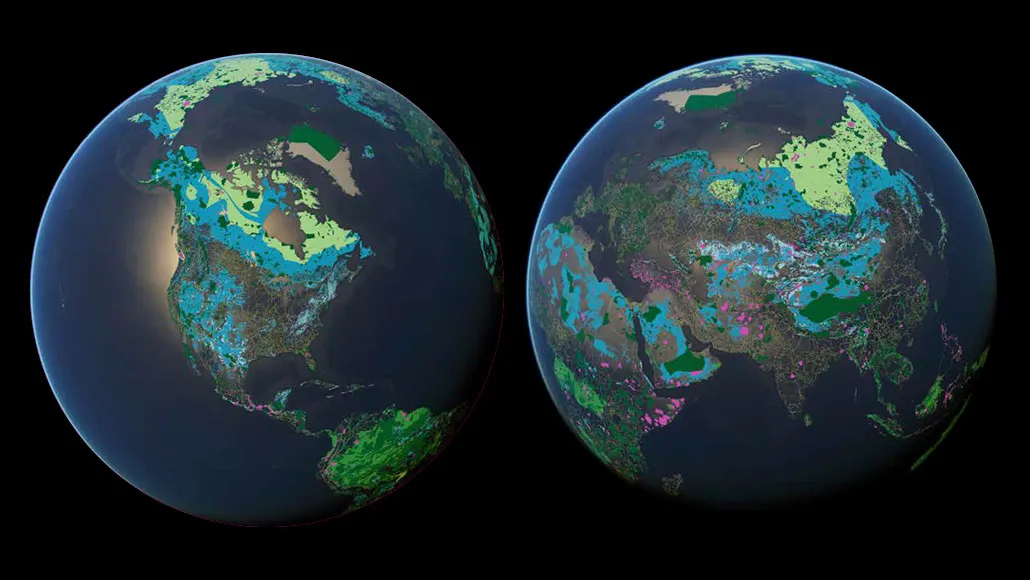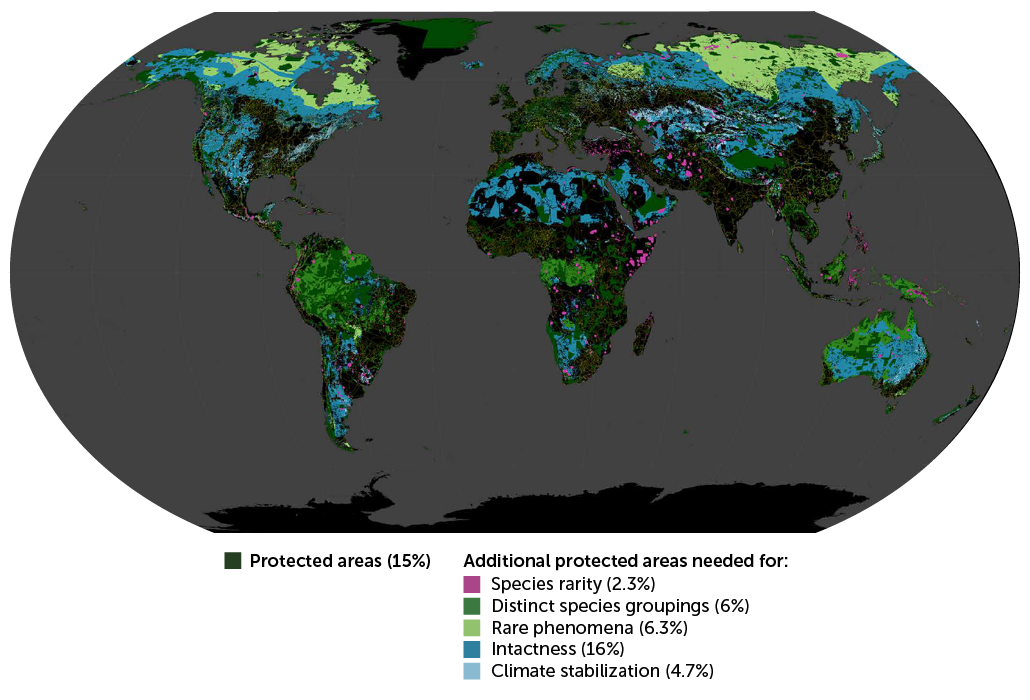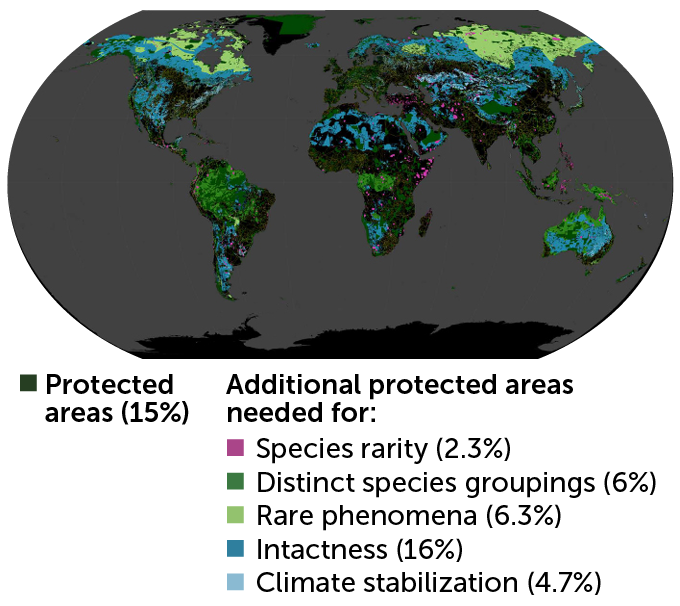Protecting half the planet could help solve climate change and save species
A new map shows where new land protections could complement existing conserved areas

An analysis shows how existing terrestrial protected areas (dark green) could be augmented with additional conserved land to achieve conservation and climate goals, such as preserving rare species nearing extinction (pink) or keeping large tracts of wilderness intact (dark blue).
E. Dinerstein et al/Science Advances 2020
Earth faces two interrelated crises: accelerating loss of biodiversity and climate change. Both are worsened by human development of natural lands that would otherwise allow species to flourish and would store atmosphere-warming carbon, stabilizing the climate.
A new study argues that nations can help avert the biodiversity and climate crises by preserving the roughly 50 percent of land that remains relatively undeveloped. The researchers dub that conserved area a “Global Safety Net,” mapping out regions that can meet critical conservation and climate goals in a study published September 4 in Science Advances.
Eric Dinerstein, a conservation biologist at RESOLVE, a nonprofit based in Washington, D.C., and colleagues began by mapping out existing protected areas, which cover about 15 percent of land. The team then sequentially added slices of land needed to meet different conservation goals, using existing biodiversity databases.
To protect species most threatened by extinction that aren’t already protected, an extra 2.3 percent of land would need to be set aside. The researchers also identified new areas that could preserve hot spots of exceptional species diversity, and large tracts of wilderness needed to support wide-ranging animals like caribou.
Much of the land identified as important for biodiversity also stores a lot of carbon, underlining the connection between conservation and climate goals. But the researchers found an additional 4.7 percent of land, including forests in the northeastern United States, that would help keep climate-warming carbon out of the atmosphere.
Providing some level of protection or sustainable management for these lands could achieve various climate and conservation goals, the researchers argue. But Dinerstein says nations must act much faster than they are to protect these areas. Currently, governments are drafting plans to protect 30 percent of the globe by 2030 (SN: 4/22/20). “That’s not fast enough,” he says. “We have to achieve a whole lot more in a decade than what people are arguing for.”
We summarize the week's scientific breakthroughs every Thursday.








